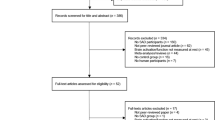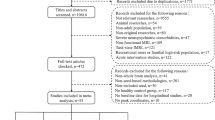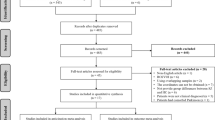Abstract
This study attempted to define further the neural processing events underlying social anxiety in patients with social anxiety disorder (SAD) and their response to pharmacotherapy. Social anxiety-related changes in regional cerebral blood flow were defined by [15O]H2 positron emission tomography (PET) in medication-free individuals with generalized SAD (gSAD), and age- and sex-matched comparison subjects, and analyzed using a linear mixed effects model. PET studies were again acquired in the gSAD individuals following an 8-week, flexible dose treatment trial of nefazodone. Both script-guided mental imagery of an anxiogenic social situation and a confrontational mental arithmetic task were associated with marked increases in self-rated anxiety in both subject groups. For gSAD subjects, social anxiety induced by guided mental imagery was associated with increased activity in the left postcentral gyrus and lenticulate, and the right inferior frontal and middle temporal gyri. Social anxiety induced by the mental arithmetic task was associated with activation of the medial and left dorsolateral prefrontal cortex, cerebellum, thalamus, insula, and ventral striatum. Both tasks were associated with relative decreases in activity in the right amygdala and the hippocampus. A direct group comparison indicated that comparison subjects exhibited a differing pattern of social anxiety-related neural activations. Nefazodone treatment was associated with marked clinical improvement. Comparison of social anxiety-related neural activations prior to and after nefazodone administration indicated greater activity in the precentral gyrus, insula, midbrain/hypothalamus, and middle frontal and anterior cingulate gyrus prior to treatment, and greater activity in the left middle occipital and bilateral lingual gyri, postcentral gyrus, gyrus rectus, and hippocampus after treatment. The results of an analysis relating neural activity and treatment-related changes in symptom severity indicated differential neural responses associated with states of symptom remission vs partial response. The observed social anxiety-related changes in distributed neural activity are consistent with cognitive models of SAD and adaptive decreases in amygdala activity in response to social anxiogenics, and support the association of altered frontal cortical responses with treatment response.
Similar content being viewed by others
Log in or create a free account to read this content
Gain free access to this article, as well as selected content from this journal and more on nature.com
or
References
Abbott MJ, Rapee RM (2004). Post-event rumination and self-appraisal in social phobia before and after treatment. J Abnorm Psychol 113: 136–144.
Adolphs R (2001). The neurobiology of social cognition. Curr Opin Neurobiol 11: 231–239.
Baker KB, Kim JJ (2004). Amygdalar lateralization in fear conditioning: evidence for greater involvement of the right amygdala. Behav Neurosci 118: 15–23.
Bell CJ, Malizia AL, Nutt DJ (1999). The neurobiology of social phobia. Eur Arch Psychiatr Clin Neurosci 249: S11–S18.
Birbaumer N, Grodd W, Diedrich O, Klose U, Erb M, Lotze M et al (1998). fMRI reveals amygdala activation to human faces in social phobics. Neuroreport 9: 1223–1226.
Bishop S, Duncan J, Brett M, Lawrence AD (2004). Prefrontal cortical function and anxiety: controlling attention to threat-related stimuli. Nat Neurosci 7: 184–188.
Botvinick M, Braver TS, Carter CS, Cohen JD (2001). Conflict monitoring and cognitive control. Psychol Rev 108: 624–652.
Bourne EJ (1995). The Anxiety and Phobia Workbook, 2nd edn. New Harbinger Publications, Inc.: Oakland, CA.
Bowman D, Kilts CD (2003). Modeling intra-subject correlation among repeated scans in positron emission tomography (PET) neuroimaging data. Hum Brain Mapp 20: 59–70.
Breiter HC, Rauch SL, Kwong KK, Baker JR, Weisskoff RM, Kennedy DN et al (1996). Functional magnetic resonance imaging of symptom provocation in obsessive–compulsive disorder. Arch Gen Psychiatr 53: 595–606.
Britton JC, Phan KL, Taylor SF, Fig LM, Liberzon I (2005). Corticolimbic blood flow in posttraumatic stress disorder during script-driven imagery. Biol Psychiatr 57: 832–840.
Brothers L (1990). The social brain: a project for integrating primate behavior and neurophysiology in a new domain. Concepts Neurosci 1: 27–51.
Chartier MJ, Hazen AL, Stein MB (1998). Lifetime patterns of social phobia: a retrospective study of the course of social phobia in a nonclinical population. Depression Anxiety 7: 113–121.
Condren RM, O'Neill A, Ryan MCM, Barrett P, Thakore JH (2002). HPA axis response to a psychological stressor in generalised social phobia. Psychoneuroendocrinol 27: 693–703.
Cox BJ, Fleet C, Stein MB (2004). Self-criticism and social phobia in the US national comorbidity survey. J Affect Disord 82: 227–234.
Davidson JT, Hughes DL, Georges LK (1993). The epidemiology of social phobia: findings from the Duke Epidemiological Catchment Area Study. Psychol Med 23: 709–718.
Davis R, Whittington X, Bryson HM (1997). Nefazodone—a review of its pharmacology and clinical efficacy in the management of major depression. Drugs 53: 608–636.
den Boer JA (1997). Social phobia: epidemiology, recognition, and treatment. BMJ 315: 796–800.
First MB, Spitzer RL, Robert L, Gibbon M, Williams JBW (2002). Structured Clinical Interview for DSM-IV-TR Axis I Disorders, Research Version, Patient Edition. American Psychiatric Press: Washington, DC.
Furmark T, Tillfors M, Marteinsdottir I, Fischer H, Pissiotta A, Langstrom B et al (2002). Common changes in cerebral blood flow in patients with social phobia treated with citalopram or cognitive-behavioral therapy. Arch Gen Psychiatr 59: 425–433.
Goldapple K, Segal Z, Garson C, Lau M, Bieling P, Kennedy S et al (2004). Modulation of cortical-limbic pathways in major depression: treatment-specific effects of cognitive behavioral therapy. Arch Gen Psychiatr 61: 34–41.
Hamilton M (1960). Diagnosis and rating scale for depression. Br J Psychiatr 3: 76–79.
Izquierdo A, Murray EA (2004). Combined unilateral lesions of the amygdala and orbital frontal cortex impair affective processing in rhesus monkeys. J Neurophysiol 91: 2023–2039.
Kalin NH, Shelton SE, Davidson RJ (2004). The role of the central nucleus of the amygdala in mediating fear and anxiety in the primate. J Neurosci 24: 5506–5515.
Katzelnick DJ, Kobak KA, DeLeire T, Henk HJ, Greist JH, Davidson J et al (2001). Impact of generalized social anxiety disorder in managed care. Am J Psychiatr 158: 1999–2007.
Kelley WM, Macrae CN, Wyland CL, Caglar S, Inati S, Heatherton TF (2002). Finding the self: An event-related fMRI study. J Cognit Neurosci 14: 785–794.
Kessler RC, Berglund P, Demler O, Jin R, Walters EE (2005a). Lifetime prevalence and age-on-onset distributions of DSM-IV disorders in the national comorbidity survey replication. Arch Gen Psychiatr 62: 593–602.
Kessler RC, Chiu WT, Demler O, Walters EE (2005b). Prevalence, severity, and comorbidity of 12-month DSM-IV disorders in the national comorbidity survey replication. Arch Gen Psychiatr 62: 617–627.
Kessler RC, Stein MB, Berglund PA (1998). Social phobia subtypes in the National Comorbidity Survey. Am J Psychiatr 155: 613–619.
Kimbrell TA, George MS, Parekh PI, Ketter TA, Podell DM, Danielson AL et al (1999). Regional brain activity during transient self-induced anxiety and anger in healthy adults. Biol Psychiatr 46: 454–465.
Kirschbaum C, Pirke KM, Hellhammer DH (1993). The Trier Social Stress Test: a tool for investigating psychobiological stress responses in a laboratory setting. Neuropsychoendocrinology 28: 76–81.
Liebowitz MR (1987). Social phobia. In: Klein DF (ed). Modern Problems in Pharmacopsychiatry: Anxiety, Vol. 22. Karger: Basel, NY. pp 141–173.
Liebowitz MR, Gorman JM, Fyer AJ, Klein DF (1985). Social phobia: review of a neglected anxiety disorder. Arch Gen Psychiatr 42: 729–736.
Mataix-Cols D, Cullen S, Lange K, Zelaya F, Andrew C, Amaro E et al (2003). Neural correlates of anxiety associated with obsessive–compulsive symptom dimensions in normal volunteers. Biol Psychiatr 53: 482–493.
Mathew SJ, Coplan JD, Gorman JM (2001). Neurobiological mechanisms of social anxiety disorder. Am J Psychiatr 158: 1558–1567.
Matsubara M, Yamaguchi S, Xu J, Kobayashi S (2004). Neural correlates for the suppression of habitual behavior: a functional MRI study. J Cogn Neurosci 16: 944–954.
Mayberg HS, Branna SK, Tekell JL, Silva JA, Mahurin RK, McGinnis S et al (2000). Regional metabolic effects of fluoxetine in major depression: serial changes and relationship to clinical response. Biol Psychiatr 48: 830–843.
Mazziotta JC, Huang SC, Phelps ME (1985). A noninvasive positron computed tomography technique using oxygen-15-labeled water for the evaluation of neurobehavioral task batteries. J Cereb Blood Flow Metab 5: 70–78.
Miller EK, Cohen JD (2001). An integrative theory of prefrontal cortex function. Ann Rev Neurosci 24: 167–202.
Neter J, Kutner MH, Nachtsheim CJ, Wasserman W (1996). Applied Linear Statistical Models, 4th edn. McGraw Hill/Irwin: Chicago, IL.
Ochsner KN, Bunge SA, Gross JJ, Gabrieli JDE (2002). Rethinking feelings: an fMRI study of the cognitive regulation of emotion. J Cogn Neurosci 14: 1215–1229.
Ochsner KN, Ray RD, Cooper JC, Robertson ER, Chopra S, Gabrieli JDE et al (2004). For better or for worse: neural systems supporting the cognitive down- and up-regulation of negative emotion. NeuroImage 23: 483–499.
Pitman RK, Orr SP, Forgue DF, de Jong JB, Claiborn JM (1987). Psychophysiologic assessment of posttraumatic stress disorder imagery in Vietnam combat veterans. Arch Gen Psychiatry 44: 970–975.
Rapee RM, Heimberg RG (1997). A cognitive-behavioral model of anxiety in social phobia. Behav Res Ther 35: 741–756.
Rauch SL, Savage CR, Alpert NM, Miguel EC, Baer L, Breiter HC et al (1995). A positron emission tomography study of simple phobic symptom provocation. Arch Gen Psychiatr 52: 20–28.
Safren SA, Heimberg RG, Brown EJ, Holle C (1997). Quality of life in social phobia. Anxiety 4: 126–133.
Saxena S, Brody AL, Maidment KM, Dunkin JJ, Colgan M, Alborzian S et al (1999). Localized orbitofrontal and subcortical metabolic changes and predictors of response to paroxetine treatment in obsessive-compulsive disorder. Neuropsychopharmacology 21: 683–693.
Schneider F, Weiss U, Kessler C, Müler-Gärtner HW, Poss S, Salloum JB et al (1999). Subcortical correlates of differential classical conditioning of aversive emotional reactions in social phobia. Biol Psychiatr 45: 863–871.
Schneier FR, Heckelman LR, Garfinkel R, Campeas R, Fallon BA, Gitow A et al (1994). Functional impairment in social phobia. J Clin Psychiatr 55: 322–331.
Schneier FR, Johnson J, Hornig CD, Liebowitz MR, Weissman MM (1992). Social phobia: comorbidity and morbidity in an epidemiologic sample. Arch Gen Psychiatr 49: 282–288.
Schneier FR, Liebowitz MR, Abi-Dargham A, Zea-Ponce Y, Lin SH, Laruelle M (2000). Low dopamine D2 receptor binding potential in social phobia. Am J Psychiatr 157: 457–459.
Sheehan PQ (1967). A shortened form of Bett's questionnaire on mental imagery. J Clin Psychol 223: 380–389.
Shin LM, McNally RJ, Kosslyn SM, Thompson WL, Rauch SL, Alpert NM et al (1999). Regional cerebral blood flow during script-driven imagery in childhood sexual abuse-related PTSD: a PET investigation. Am J Psychiatr 156: 575–584.
Stein MB, Goldin PR, Sareen J, Zorrilla L, Brown GG (2002). Increased amygdala activation to angry and contempuous faces in generalized social phobia. Arch Gen Psychiatr 59: 1027–1034.
Stein MB, Kean YM (2000). Disability and quality of life in social phobia: epidemiologic findings. Am J Psychiatr 157: 1606–1613.
Stein MB, Walker JR, Forde DR (1996). Public speaking fears in a community sample: prevalence, impact on functioning, and diagnostic classification. Arch Gen Psychiatr 53: 169–174.
Straube T, Glauer M, Dilger S, Mentzel HJ, Miltner WHR (2006). Effects of cognitive-behavioral therapy on brain activation in specific phobia. NeuroImage 29: 125–135.
Talairach J, Tournoux P (1988). Co-Planar Stereotaxic Atlas of the Human Brain. Thieme Medical Publishers: New York. 122pp.
Tiihonen J, Kuikka J, Bergstrom K, Lepola U, Koponen H, Leinonen E (1997). Dopamine reuptake site densities in patients with social phobia. Am J Psychiatr 154: 239–242.
Tillfors M, Furmark T, Marteinsdottir I, Fredrickson M (2002). Cerebral blood flow during anticipation of public speaking in social phobia: a PET study. Biol Psychiatr 52: 1113–1119.
Tillfors M, Furmark T, Marteinsdottir I, Fischer H, Pissiota A, Landstrom B et al (2001). Cerebral Blood Flow in Subjects With Social Phobia During Stressful Speaking Tasks: A PET Study. Am J Psychiatr 158: 1220–1226.
Verbeke G, Molenberghs G (2000). Linear Mixed Models for Longitudinal Data. Springer: New York.
Weiller E, Bisserbe JC, Boyer P, Lepine JP, Lecrubier Y (1996). Social phobia in general health care: an unrecognised undertreated disabling disorder. Br J Psychiatr 168: 169–174.
Wittchen HU, Fuetsch M, Sonntag H, Muller N, Liebowitz M (2000). Disability and quality of life in pure and comorbid social phobia. Findings from a controlled study. Eur Psychiatr 15: 46–58.
Woods RP, Grafton ST, Holmes CJ, Cherry SR, Mazziotta JC (1998a). Automated image registration: I. General methods and intrasubject, intramodality validation. J Comput Assist Tomogr 22: 139–152.
Woods RP, Grafton ST, Watson JDG, Sicotte NL, Mazziotta JC (1998b). Automated image registration: II. Intersubject validation of linear and nonlinear models. J Comput Assist Tomogr 22: 53–165.
Acknowledgements
This study was supported by an investigator-initiated grant from Bristol-Myers Squibb Pharmaceuticals and by the Emory Conte Center for the Psychobiology of Major Mental Disorders (NIH MH58922). Partial support was also provided by NIH via K25 MH65473. The authors gratefully acknowledge the contributions of Lisa Page and Margie Jones. The generous commitment of the individuals with social anxiety disorder to participate as research volunteers is also gratefully acknowledged.
Author information
Authors and Affiliations
Corresponding author
Rights and permissions
About this article
Cite this article
Kilts, C., Kelsey, J., Knight, B. et al. The Neural Correlates of Social Anxiety Disorder and Response to Pharmacotherapy. Neuropsychopharmacol 31, 2243–2253 (2006). https://doi.org/10.1038/sj.npp.1301053
Received:
Revised:
Accepted:
Published:
Issue date:
DOI: https://doi.org/10.1038/sj.npp.1301053
Keywords
This article is cited by
-
Electrical Stimulation Normalizes c-Fos Expression in the Deep Cerebellar Nuclei of Depressive-like Rats: Implication of Antidepressant Activity
The Cerebellum (2017)
-
Amygdala Subregions Tied to SSRI and Placebo Response in Patients with Social Anxiety Disorder
Neuropsychopharmacology (2012)
-
Changes in regional brain volumes in social anxiety disorder following 12 weeks of treatment with escitalopram
Metabolic Brain Disease (2010)
-
A PET Study of Tiagabine Treatment Implicates Ventral Medial Prefrontal Cortex in Generalized Social Anxiety Disorder
Neuropsychopharmacology (2009)
-
fMRI predictors of treatment outcome in pediatric anxiety disorders
Psychopharmacology (2007)



